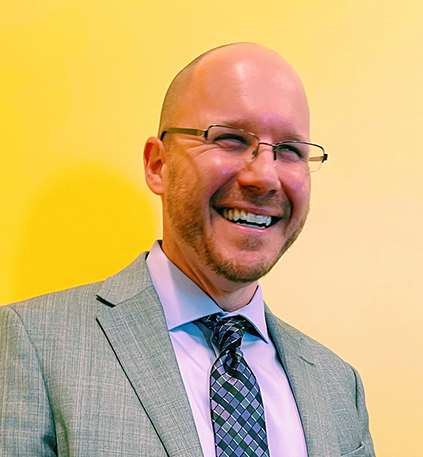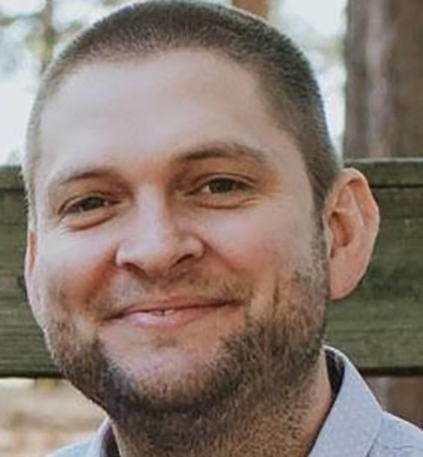
‘They’re in deep hiding’: Pandemic hinders efforts to reengage Texas’ disconnected youth
Part 1 | Part 2
Many life events that set the stage for economic security—graduating from high school, attending college and getting a first job—happen in a relatively short time. Given that higher educational attainment is correlated with higher future income, the ages of 16 to 24 are pivotal in laying a foundation for success. For many teenagers and young adults, the pandemic has disrupted their lives at this critical juncture.
In previous articles, we discussed how 16-to-24-year-olds may have a harder time returning to the labor force compared with other age groups. We also looked at declining enrollment among college and university students, especially for women and Hispanics in Texas. These trends together suggest that the number of youths disconnected from both work and school—known as opportunity youth—has grown during the pandemic. A 2019 Dallas Fed report estimated that there were already half a million opportunity youth in Texas even before the pandemic. This third and final article assesses the current state of the problem and what it will take to ensure a more prosperous future for these youths, their communities and the economy as a whole.
We spoke with experts in the field from three organizations in different parts of Texas to get a reading on what has happened to this vulnerable group of young people during the pandemic. Urban service providers in Houston and San Antonio said the challenge that looms largest is finding the youths who fell off their radar during the pandemic. While the organizations were able to pivot to online operations, the lack of in-person outreach and services made it easier for these disconnected youths to disappear from their view.
“They’re in deep hiding at this point,” said Chris Valka, chief operations officer at SERJobs in Houston.Knowing that there is so much work to be done to find and reengage these young people, the officials we spoke with said that the pandemic has heightened the sense of urgency for them and for many of their partners.
Revisiting local initiatives on opportunity youth
For an on-the-ground perspective, we went back to officials from three organizations that were featured in our 2019 report on opportunity youth:
- Angel Lerma is special projects manager at the city of San Antonio. He leads the city’s NXT Level Youth Opportunity Center, a hub where youths can engage with life coaches and get reconnected to work and/or school. The center is a cross-sector partnership with nonprofits Goodwill of San Antonio and Communities in Schools of San Antonio.
- Sylvia Leal is the senior program officer and Jerry Kenney is the program officer of education and economic opportunity at the T.L.L. Temple Foundation based in Lufkin. T.L.L. Temple serves the Deep East Texas region and funds local and regional initiatives led by community partners that create lasting economic opportunities for rural youths.
- Sheroo Mukhtiar, chief executive officer, works with Valka at SERJobs. The organization serves a 13-county area surrounding Houston, providing programs and services to help youths and adults gain skills and find employment.
 Sylvia Leal, T.L.L. Temple Foundation
Sylvia Leal, T.L.L. Temple FoundationWhat follows is the perspectives of the officials in these organizations on how the pandemic affected their work and how they intend to reengage youths in need in their areas.
Pandemic worsens problems for disconnected youths
When asked what issues opportunity youth have struggled with the most since COVID-19 arrived, our interviewees all commented that the pandemic did not produce new challenges as much as it exacerbated existing ones.
For T.L.L. Temple, one of the biggest problems was—and still is—digital inclusion. Rural areas in East Texas still lack the digital infrastructure to conduct school and business from home. When the pandemic necessitated the closure of in-person schooling and gatherings, the transition to online learning and business simply didn’t happen for much of the region. This made the pandemic even more of an isolating experience for rural opportunity youth.
 Sheroo Mukhtiar, SERJobs
Sheroo Mukhtiar, SERJobsLerma noted that the top three issues faced by these youths in San Antonio did not change, but the order of importance did. Previously, transportation was the biggest challenge for NXT Level Center clients, followed by child care access and mental health issues. After the pandemic hit, Lerma said, mental health issues became the No. 1 challenge, followed by child care access and transportation. At SERJobs, Mukhtiar and Valka found that transportation and child care had also become lower barriers to providing services.
When it comes to new challenges, Mukhtiar and Valka added that COVID vaccination status is a barrier for the youths they work with since many potential employers require employees to be vaccinated. Young SERJobs members are also deterred by low wages that some employers offer. While low wages are not a new barrier to employment, many low-skill workers now find themselves with the upper hand when it comes to finding better-paying work. This may be due, in part, to savings accumulated from government support during the pandemic.
An upside to the pandemic, Valka said, is that many young people had the opportunity to pause and reconsider how they want to approach their educational and economic goals. “I think people are asking the legitimate life questions about ‘What is the purpose of my work?’” he said. “We have an environment of COVID that has really forced that kind of more purposeful thinking.”
Operational changes: going virtual and narrowing strategies
The fact that transportation became less of a problem was a silver lining for both NXT Level and SERJobs. Both organizations migrated their services to virtual platforms once the pandemic hit. “The virtual spaces open so many opportunities at the end of the day,” said Lerma. “Access to enrollment is a little bit different; they’re connecting at a higher rate.”
The next challenge for both organizations, like many others, is how to operate in a hybrid environment with both virtual and in-person services. NXT Level saw the need for its services increase so much that it plans to open a second center in 2022.
The pandemic also provided these organizations with an opportunity to clarify their strategies and create more meaningful partnerships. NXT Level’s second center is the result of a partnership with San Antonio’s Northside Independent School District, which is in a part of town where many clients come from. Lerma believes that targeting this area will better position the center. “It’ll definitely increase our capacity to serve additional opportunity youth,” he said.
In Deep East Texas, T.L.L. Temple is working strategically with nearby institutions of higher education and employers. This has meant highlighting school and career paths that are in demand locally and knowing where the region’s strengths lie. “In a small, remote setting, you have to be very succinct and very clear about which career paths and job opportunities are really available to help our opportunity youth reengage … that lead them toward something that’s pulling them out of the situation,” said Leal.
Short-term crises take priority over longer-term problems
The officials at all three organizations mentioned that the pandemic has made it difficult to plan for the long term when they’re having to solve immediate problems. They expressed concern about having the time and other resources necessary to reconnect these youths with work and school.
“The successes or the outcomes … you fight for every single one of them. It’s slow going and it’s hard,” said SERJobs’ Valka.
Funder T.L.L. Temple knows the day-to-day challenges faced by the communities it serves. “One of our [public school] superintendents says that she actually had to do the bus route because there was nobody else to [drive],” said Leal. “They’re in crisis intervention right now.”

This chaos also makes it hard for nonprofits and other community organizations to establish long-term plans for systemic issues like the lack of broadband. “There are really few agencies in the rural space that can take the longer-term view because we’re constantly responding to short-term challenges,” said T.L.L. Temple’s Kenney.
While the pandemic threw the organizations into crisis mode, it heightened awareness of opportunity youth and shined a light on the importance of deliberate reengagement. This is especially true in East Texas.
“Prepandemic, it seemed like we had a harder time helping our small communities understand the need for very engaged, focused work for our opportunity youth,” said Leal. “Right now, where we are, I don’t think there’s that much of a disconnect.”
Texas communities come together to learn
Texas communities don’t need to fight on their own. Many benefit from the support of the Aspen Institute’s Opportunity Youth Forum, which promotes best practices for reengaging these young people. San Antonio and Deep East Texas are two of the forum’s 35 partnerships.
 Jerry Kenney, T.L.L. Temple Foundation
Jerry Kenney, T.L.L. Temple FoundationIn 2021, the Aspen Opportunity Youth Forum launched the Texas Opportunity Youth Network (TOYN). The mission of the TOYN is to advance the work of communities that are committed to reengaging and supporting opportunity youth. TOYN identifies and spurs adoption of strategies leading to systemic changes in education and workforce development that benefit these youths.
“So many of our communities are doing great work to support opportunity youths and young adults, but maybe not at scale or not quite reaching the young people they are trying to serve,” said Hannah Gourgey, senior consultant to the Aspen Institute and current leader of TOYN. “TOYN's role is to bring together these communities, our state-level champions and our opportunity youth leaders to learn from one another and to build both capacity and expertise.”
Judging from employment and educational trends outlined in our Opportunity Youth series, the number of disconnected young people has likely risen during the pandemic. Their plight has heightened the need for targeted services from organizations such as NXT Level and SERJobs and for funding from organizations like T.L.L. Temple. But it has also led to positive changes—such as the expansion of virtual services and greater awareness among community leaders—that can help bring opportunity youth out of hiding and into the light.
Author
The views expressed are those of the author and should not be attributed to the Federal Reserve Bank of Dallas or the Federal Reserve System.
